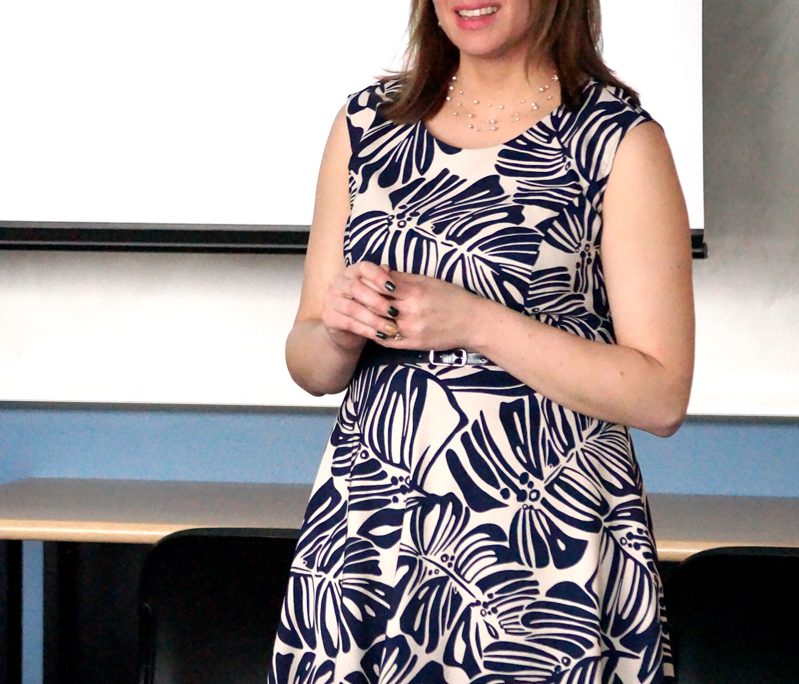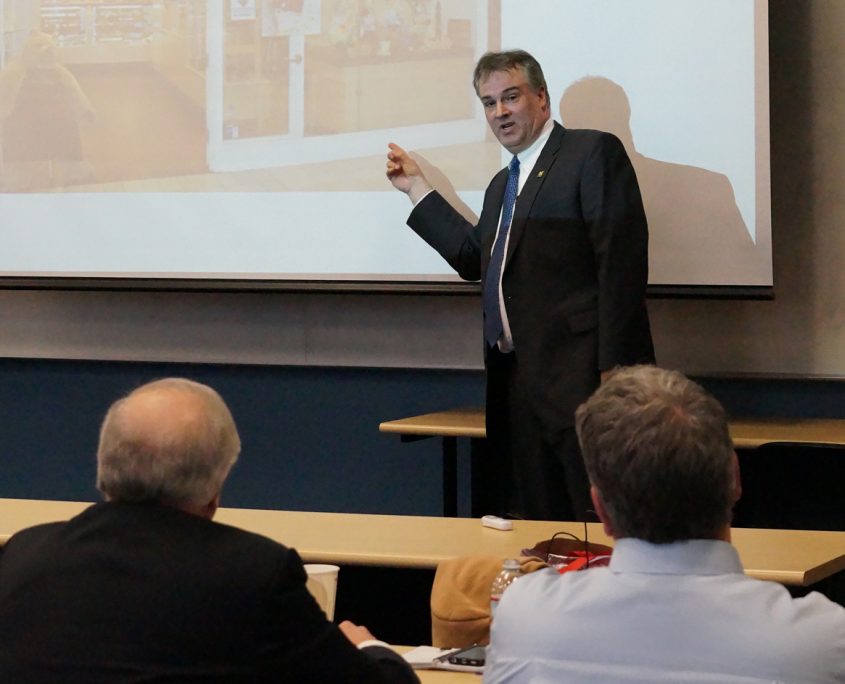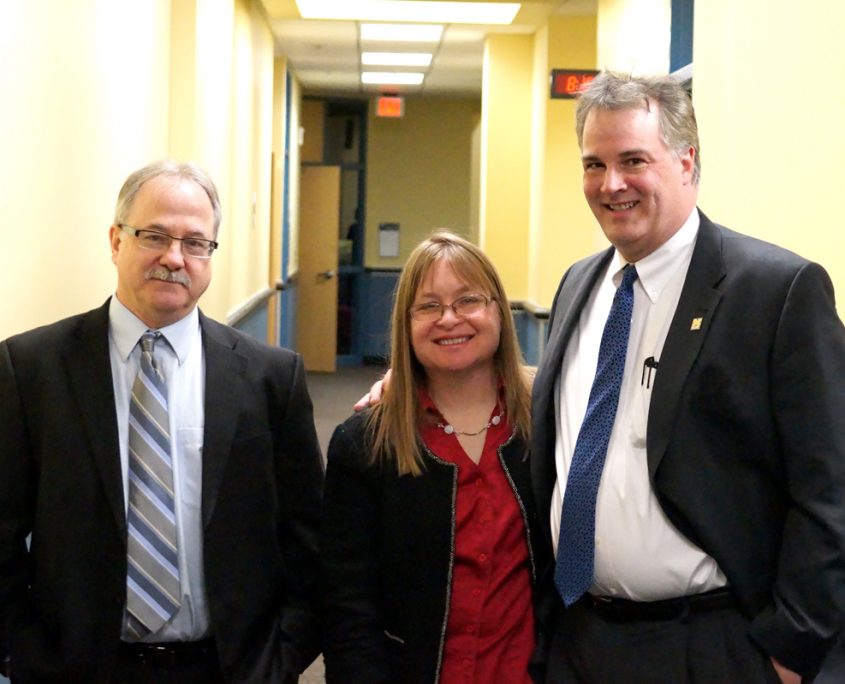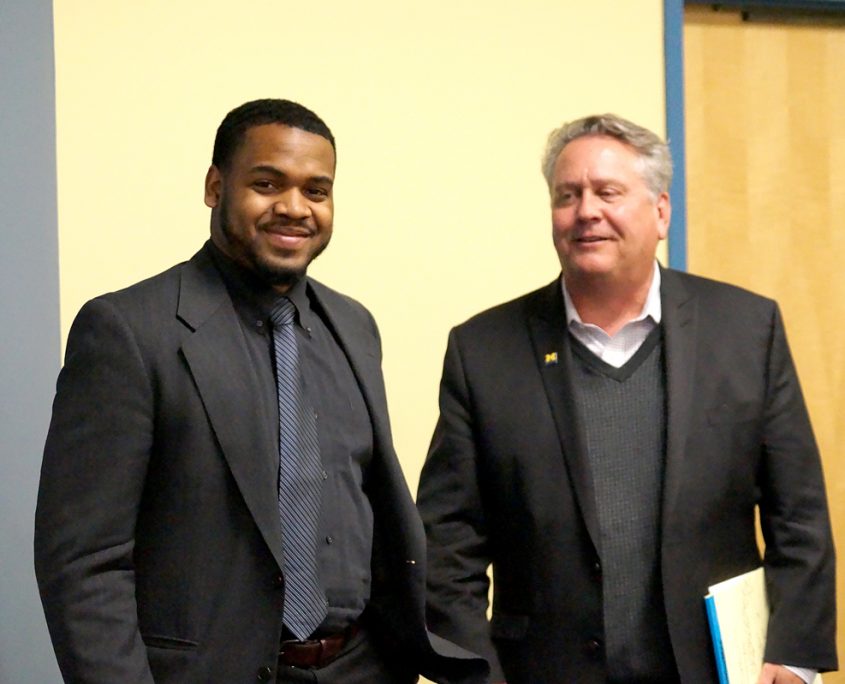Brian Blume, Ph. D.
Professor of Org. Behavior & HR Management
(Article by Kim Laux)
When commenting on the results of a study that identified the greatest fears among Americans, comedian Jerry Seinfeld joked that “at a funeral, more people would rather be the guy in the coffin than the one delivering the eulogy.”
Fear of public speaking ranked higher on the list than death itself.
Public speaking anxiety is only one form of what scholars call communication apprehension (CA), the fear or anxiety of real (or even anticipated) communication with another person. These feelings may also arise during one-on-one conversations or in group discussions/meetings.
Seeking to understand the implications of CA in the business world, Brian D. Blume, Ph.D., Associate Professor of Organizational Behavior and Human Resources at UM-Flint, conducted a study in which he measured this level of fear/anxiety in 263 students.
Professor Blume and his two coauthors took a closer look at the relationship between students’ CA scores and leadership, multicultural appreciation, adaptability and grades. Their article, “Communication Apprehension: A Barrier to Students’ Leadership, Adaptability, and Multicultural Appreciation,” appeared in the Academy of Management Learning & Education (Vol. 12, No. 2, 2013).
“My earlier studies indicate that CA can prevent otherwise highly-capable individuals from reaching their full-potential,” said Blume. “Most research from the communication literature focuses on reducing CA in the context of a speech or presentation. However, the ability to overcome CA in a team setting and in a one-on-one conversation is likely to influence practices that are important for both business students and working professionals.”
The study revealed that CA was negatively associated with students’ willingness to take on leadership opportunities, appreciation for a multicultural world, and adaptability to new situations. People higher in CA are more likely to experience anxiety when required to communicate, avoid situations demanding communication and speak less when such situations are unavoidable.
“We believe that more research is needed to develop interventions for these contexts,” said Blume. “For example, if someone is hesitant to speak up in a group/team setting or when interacting with other individuals, s/he may want to set a goal to give a certain amount of input in their next team meeting. S/he may also set a goal to talk to one new person a week by initiating a conversation.”
Professor Blume believes that the first step toward managing CA is self-awareness.
“An honest and accurate assessment of one’s level of CA and its potential effects on academic, social and future career outcomes is essential,” he said. “This should be assessed early on in college to help students understand what they may be experiencing and allow them to confront the anxiety they feel in certain situations.
“People should be educated regarding the implications of higher CA and encouraged to go against feelings of anxiety to communicate whenever possible, particularly in relatively low-risk learning environments like the classroom. This is consistent with the clever adage that, The biggest difference between an experienced speaker and an inexperienced speaker is when an experienced speaker is scared to death, he knows it is normal.”
To help someone become more self-aware of his or her level of communication apprehension, Professor Blume has posted a self-assessment (as well as his full article) at http://www.professorblume.com/research.html. He also included a guide to help with interpretation of the CA score and links to websites that offer practical suggestions for overcoming CA.
















